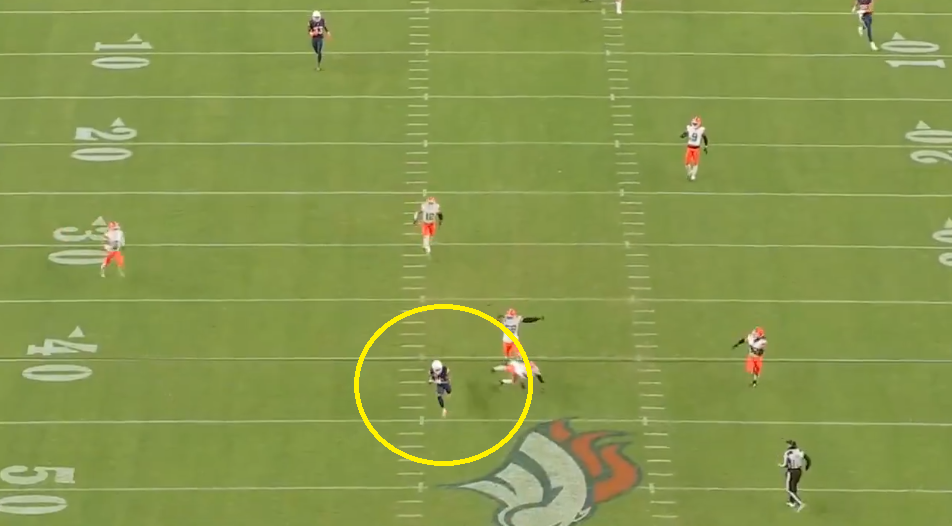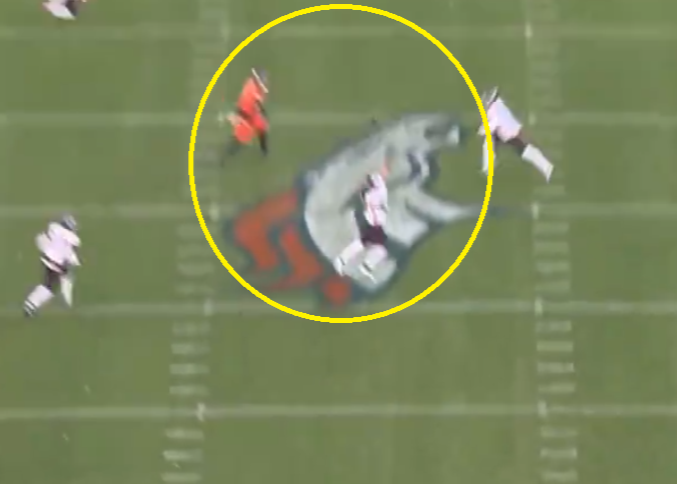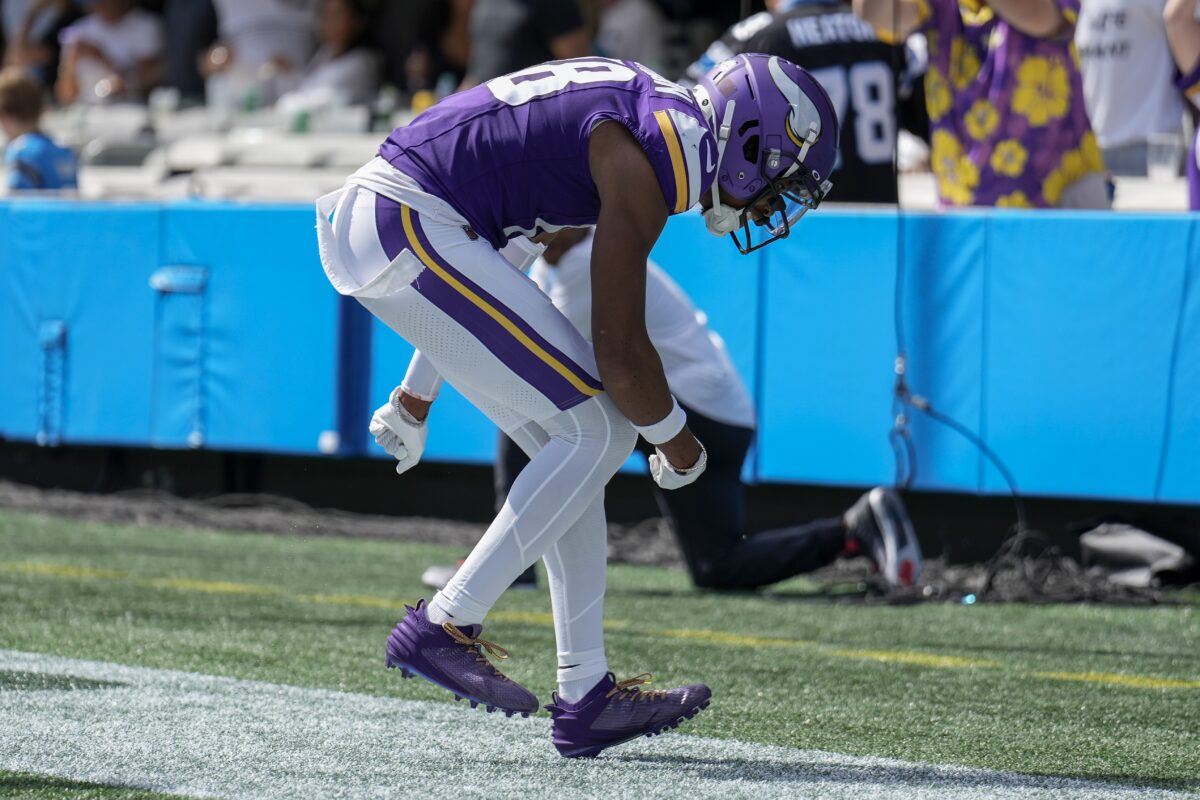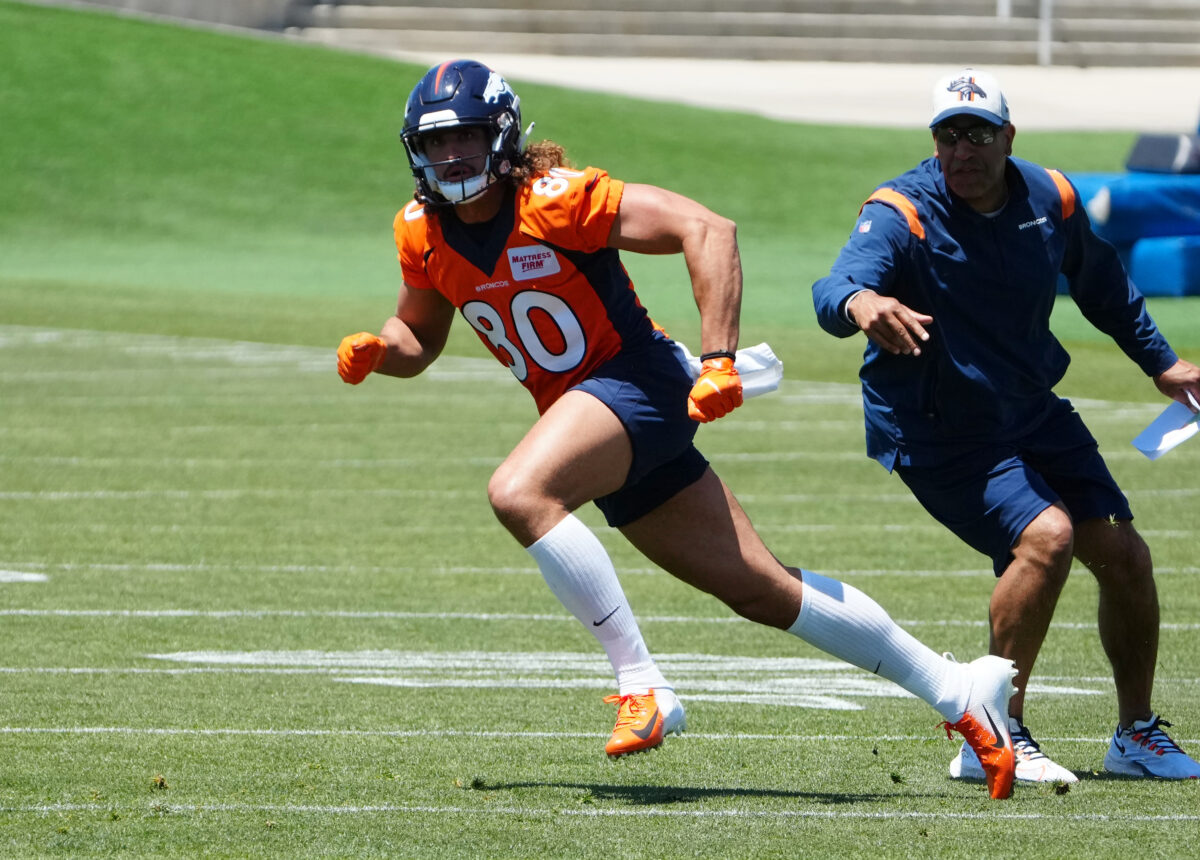One of the best features of the NFL’s Game Pass site, beyond the ability to watch and analyze game tape from the overhead and end zone angles, is the “Game Pass Film Session” series, now in its second season, and hosted by former NFL players and current NFL analysts Brian Baldinger and Kurt Warner. The series, shot at NFL Films headquarters in Mount Laurel, New Jersey, gives viewers an intricate and intimate look at how the NFL’s best players do what they do.
Since the Raiders selected him with the fourth overall pick in the 2015 draft out of Alabama, Amari Cooper has been one of the NFL’s best and most complete route-runners. With both the Raiders and Cowboys, who traded for him in October, 2018, Cooper has helped his quarterbacks in ways a lot of receivers just can’t with his route awareness, technical perfection, and understanding of the passing game.
Cooper recently sat down with Warner and Baldinger to discuss the science of his work, and it’s fascinating to discover just how much a technically proficient receiver can complete an offense. In Cooper’s case, there are times when he’s able to go above and beyond his offensive coordinators to create explosive plays. This touchdown against the Eagles in December, 2019 is a prefect example — Cooper was tired of Scott Linehan calling stop route after stop route and exhorted Dak Prescott to do something different.
“It’s interesting because I actually had another stop route on that play and they were, if you were watching, really sitting on those stop routes,” Cooper said of Philadelphia’s defense. “And I was like, this is ridiculous. So when I broke the huddle I was kind of mad and I was like, Dak, come on. And he was just like, just run it bro. And I guess he thought about it again and he kind of signaled a go route and I was elated when he did that. And I took off, caught the ball, and scored.”
With Warner and Baldinger, Cooper went even deeper into the particulars that make him great.
Releasing off the line of scrimmage
In this touchdown against the Giants in Week 1 of the 2019 season, Cooper talked about how he was able to torch rookie cornerback Deandre Baker on an end zone fade throw from Prescott.
“So, this play? It’s a rookie out there,” Cooper explained. “The first game of the season. And I knew I had him, because he jumped before the play. And I’m like, ‘This guy’s kind of scared. The key to winning that route is — you see that I switched my feet at the line of scrimmage, because I want to give him that hard jab inside so he can jump inside. I want to show the quarterback that I’m open as early as possible, so he won’t come off me. So, I give him that hard jab inside, and that’s all for Dak, so he can see that separation.

“I like being really patient when I have go balls [routes]. I like to run under him [the defender]. Like, if I was to run a speed release right there, I would probably get past him, but the ball wouldn’t be dropping in that bucket yet. That’s why I chose that release.”
As Warner pointed out, Cooper got right up on Baker’s toes with the initial skip release to avoid any separation that would allow Baker to catch up to him once Cooper made his move outside.
Speed release on the slant
When you’re facing one of the best cornerbacks in the NFL — and Buffalo’s Tre’Davious White is certainly one of them — you have to combine the physical and the mental to beat your opponent. One aspect of this is changing up your approach based on the qualities of the cornerback you’re dealing with, as Cooper did here in Week 12 of the 2019 season. It’s a simple slant on tape, but it’s not so simple in Cooper’s head. White is a technician who could likely match up with any jabs and fakes Cooper tried from the line of scrimmage, so the strategy here was to use a speed release — the receiver’s equivalent of the bull rush.

“This is all because I was playing against Tre’Davious,” Cooper said. “Usually, on a slant, I would try to give him a jab inside, release outside, and then go. But he plays over the top [to guard against the deep vertical threat], so I just ran off, because I knew he would protect the go ball. So, I ran him off, crossed his face, used my strength, and caught the ball.”

Thinking three steps ahead
When asked by Warner what his greatest strength as a player is, Cooper said that it’s his ability to think three steps ahead of the guy he’s facing.
“My game as a receiver is to try to make my route look like a different route than I’m actually running.”
On the first offensive play of Dallas’ Week 3 game against the Dolphins, Cooper hit cornerback Xavien Howard with what looked like a “Deep 2” at first — a deep over route. Then, the route turns into a “Sail 7” — a sail route to the outside. You can see how it takes Howard, an above-average defender, right out of the play.

“I’m just trying to really make it feel like it’s a Deep 2 — I want him to feel a Deep 2. It’s all about creativity in your route-running. It’s all about really selling it. When you’re running a double move, or even a route that’s not a double move, you always want to make it look like it’s another route. So, when I’m running this fake Deep 2 to Sail 7, I’m looking at Dak like I’m about to catch the Deep 2. Now, he really feels like it’s a Deep 2.”
Cooper scored two touchdowns in that 31-6 win, and this was one of them — another example of how he’s able to sell defensive backs on one route, while giving them the okay-doke on the way to yet another big play. Here, he beats Howard once again on a little pivot for a five-yard first-quarter touchdown.
As Baldinger posited, Howard is trying to take Cooper’s inside release away, and Cooper still gets inside. Patience is the key here.

“It’s really like a slant/out,” Cooper said. “I’m really trying to make it look like a slant as much as possible, and he played it phenomenally. That’s the best you can play it. I tried to jab him outside a little bit to make it seem like one of those quick slants, went inside for a couple of steps, he kind of grabbed me a little bit — playing me with his hands, like what a good cornerback would do — and I just fought through it. I won this route at the top — just fighting through it.”
Warner pointed out another subtlety of this route combination — Cooper had to stay aligned to the line of scrimmage when he went inside, or he wouldn’t have been able to take Howard back outside. Then, Cooper’s vertical push back outside put Howard at a geometric disadvantage.
As Cooper then said, the consistency of the timing of these routes plays a major factor in a quarterback’s confidence.
“I’m trying to be open as soon as possible, because I don’t want Dak to come off me. If he gets a look that he’s not used to, or he hasn’t seen in practice as far as the relationship between me and the DB, he’s not going to feel comfortable with it. He’s going to go to the next read.”
Cooper said that when he first went to Dallas, his coaches didn’t have that route in the playbook. He had to show how it would work in practice.
“My first week there, we always do red zone one-on-ones. And I ran it, and I killed the guy [the defensive back in practice]. We put it in against Tennessee my very first game, and I scored on it.”

“So, it’s about showing the guys that it actually works. And once you show them that it works, you can go to them and say, hey, this is what I think will work.”
That probably had a bit to do with Prescott’s confidence in overruling Linehan against the Eagles. When Amari Cooper comes to you with a concept, you should listen to what he has to say.
Responding to disguised coverages
One very interesting thing that came up in this film session happened during Cooper’s touchdown against the Redskins in Week 2 of the 2019 season. Here, the Cowboys utilized pre-snap motion with receiver Randall Cobb, and based on the defensive back’s movement with him, Cooper thought Washington was playing man coverage. That’s generally what happens, and why smarter offensive coaches use motion to help their quarterbacks and receivers discern coverage before the snap. However, Washington had some trickeration in mind.

“I’ve been seeing a lot of that lately — a guy would follow a guy in motion, but it wouldn’t be man; it would be zone. So, yeah — I’m looking at Cobb, and I’m looking at the guy following him [cornerback Jimmy Moreland], and I’m thinking it’s going to be man, but it’s not.”
The theoretical problem with misdiagnosing coverage is that more often than not, receivers are told to alter their routes based on the coverage. As Cooper detailed, this was indeed the case for him as the outside man in this motion to a bunch formation.
“If I’m running that sit route versus man, I have to run it off him [the cornerback]. I have to win it if he’s pressed. But if it’s zone, I’m just reading it. I’m just trying to find an open spot. I kinda see him out my peripheral coming down, and I’m just hoping the ball beats him there. Luckily, it did.”

It’s been said that luck is the residue of design, and that’s often the case with the most technically proficient and mentally prepared NFL players. Amari Cooper has the physical gifts to be one of the NFL’s best receivers, but that’s not why he is exactly that. As this film session showed, there’s so much more that goes into the preparation for every position in football than you may think.
Game Pass is currently free through July 31, 2020, and I highly recommend that any football fan who doesn’t watch it now checks it out.
!!!!!!!!!!@marvindmims |
: ESPN pic.twitter.com/DbkJnOqy7j


 (@NFL_DougFarrar)
(@NFL_DougFarrar) 





 Jaylen Waddle is going to be an absolute PROBLEM for opposing defenses this year
Jaylen Waddle is going to be an absolute PROBLEM for opposing defenses this year  . That ankle doesn’t seem to be an issue at all
. That ankle doesn’t seem to be an issue at all 




 (@NFL_Journal)
(@NFL_Journal) 









